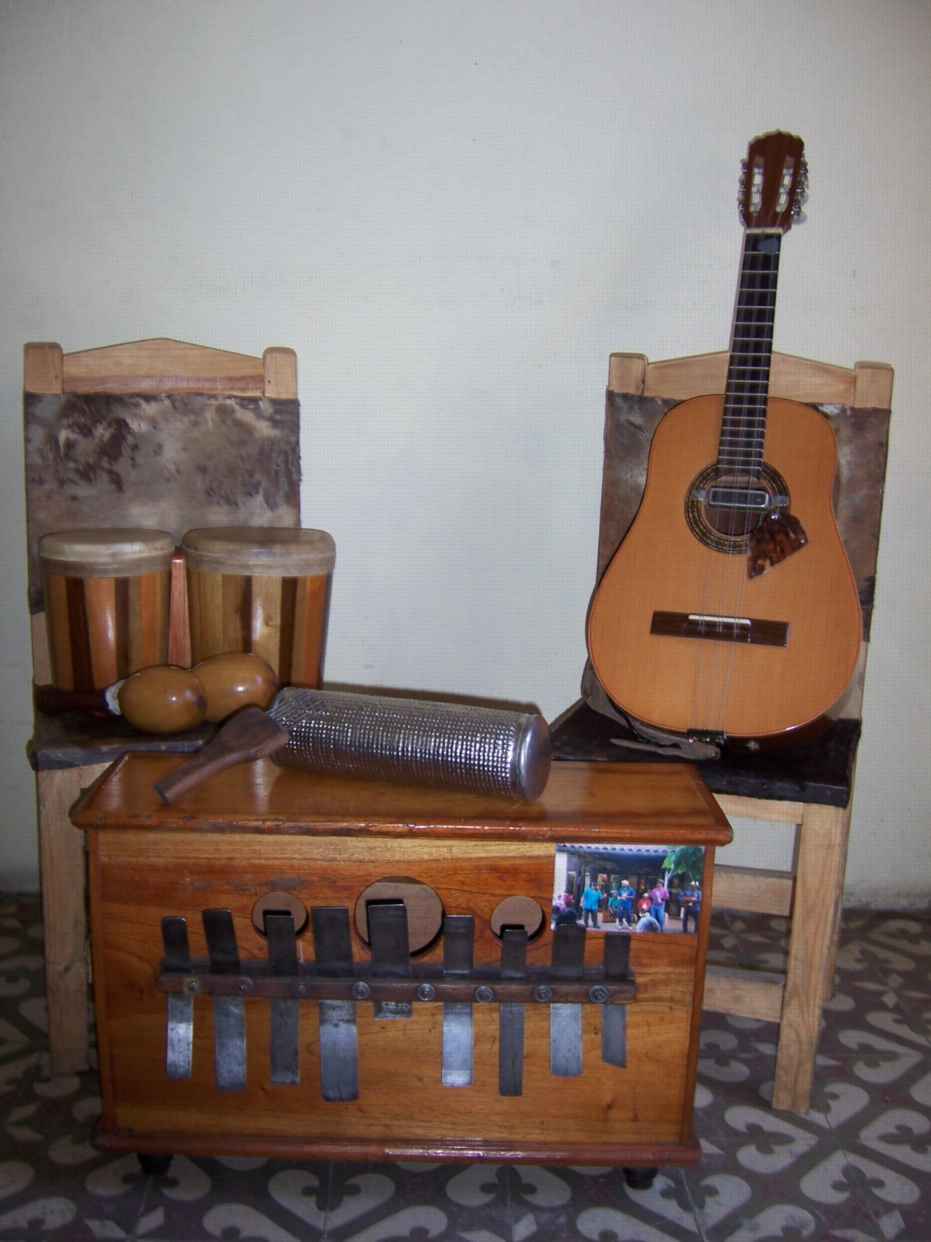7.6 The French Tomb

The French Tomb was created on February 24, 1862, under the pseudonym of de Lafayette; its name was changed in 1905 in homage to the Virgin of Charity of Cobre.
La Tumba, which is the name of an African drum, is a type of dance, song, and percussion. This manifestation arrived in Cuba with Haitian slaves after the riots of 1790. It is the result of the fusion, in the 18th century, of the music of Dahomey (Benin, Congo, and Niger) and typical French dances.
In Cuba, the oldest evidence dates back to the early 19th century, in the cities of Santiago and Guantánamo, although the French Tomb enjoyed a surge in popularity at the end of the 19th century.
Their dance-like performances begin with a solo by the lead singer, called a composeé. When he or she signals the “catá,” a large wooden xylophone begins a frenetic rhythm, accompanied by three hand-played drums. The singers accompany the rhythm with metal rattles called chachás. The drums are made from a hollowed-out wooden trunk, formed from a single piece, and decorated with painted and engraved motifs.
UNESCO recognizes the preservation of its legitimate popular traditions for nearly a century and a half as one of the primary values of the French Tomb. These traditions remain preserved in all their splendor as an undeniable example of the tradition and expression of the popular culture of eastern Cuba. On November 6, 2003, UNESCO declared it a Masterpiece of the Oral and Intangible Heritage of Humanity by Koichiro Mansura, its Director General.
The Santiago de Cuba French Tumba Society, La Caridad de Oriente, has been in existence for two centuries. It continues to perform its traditional rhythms on its original instruments, including the premier or mamamier drums, the requinto tumbadora, and the catá or cataye, which guides the rhythm.
Few of the numerous styles of French Tumba dance are practiced today, including the African mason, a humorous parody of French ballroom dances. There are also the cinta, the gallo, and the yubá, an improvised dance based on frenetic drum rhythms, considered the precursor to the Guaguancó and the Rumba.
Nowadays, this society supports the educational programs on Traditional Cuban Popular Culture that are carried out at the University of the East (Patricio Lumumba Avenue, Altos de Quintero, Santiago de Cuba) and at the Institute of Medical Sciences of the province of Santiago de Cuba (E Street and Las Americas Avenue, Sueño neighborhood, Santiago de Cuba).








